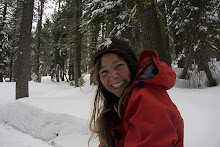
This New York Times article has beautiful ecology notebooks from 1930s California in its Multimedia section. Ecologists at UC Berkeley are retracing the steps of the first director of the UC Berkeley Museum of Vertebrate Zoology, Joseph Grinnell, who knew that one day, one hundred years from then, we would not have the same California. He knew that we would want to know what has changed, so starting in 1904 he and his team took over 2,000 photographs from all over California, and some 13,000 pages of notes.
His work has begun to move ecology from a descriptive science to a predictive one, and it's not a second too early. According to David Tilman, the McKnight presidential chair in ecology at the University of Minnesota, “The world faces immense environmental challenges that we will only resolve if we can forecast how ecosystems respond to alternative practices and policies.” New data and old will be celebrated when the UC Berkeley has its centennial celebration.
Grinnell's vision for the collection is posted on a plaque outside the library. “I wish to emphasize what I believe will ultimately prove to be the greatest purpose of our museum,” he wrote in 1910, “and this is that the student of the future will have access to the original record of faunal conditions in California and the West, wherever we now work.”
Talk about a visionary.

